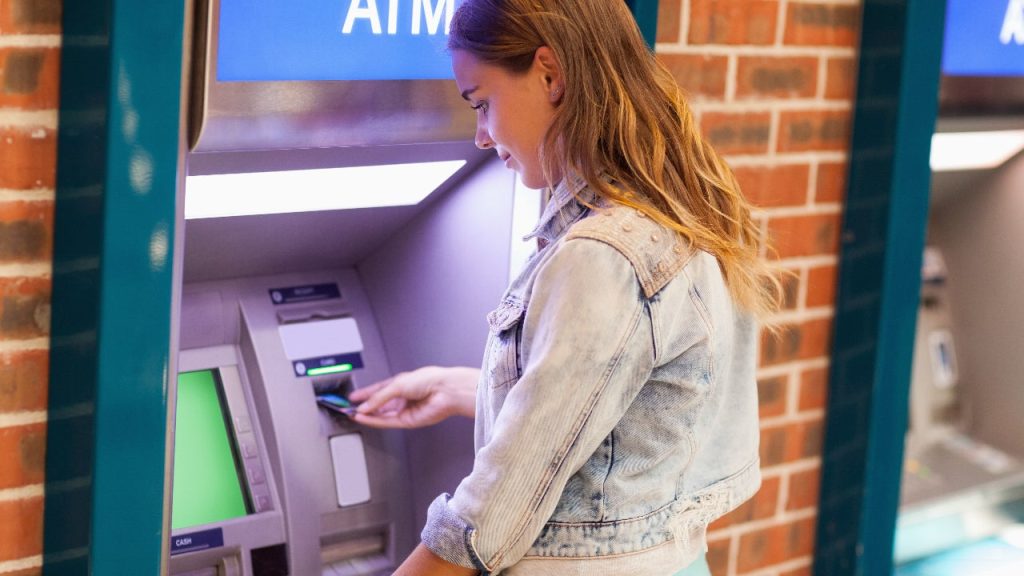Savings accounts provide you with some access to your funds, although they don’t provide the same ease of access that checking accounts do — and for a reason: Savings accounts are mostly designed for building an emergency fund or saving for other goals, rather than for everyday spending.
With few exceptions, you can’t spend money directly out of your savings account. Instead, money in savings needs to be moved to another account. Even then, financial institutions often limit the number of withdrawals or transfers account holders can make from savings accounts during each statement period.
Why there are limits on payments from your savings account
Consumers are limited in their ability to make payments from savings accounts for a reason: Savings accounts weren’t designed for frequent transactions.
Historically, the Federal Reserve has limited the number of transfers or withdrawals from a savings account to six per statement period under Regulation D. The regulation defines savings accounts as nontransaction accounts, which means they’re not primarily intended for transactions.
In response to the coronavirus pandemic, however, the Federal Reserve Board amended Reg. D to remove the six-per-month limit. Some banks, now, may let customers make more than six transactions out of savings accounts. Banks aren’t required to honor the amended rule, but many have reduced restrictions to make it easier for their customers to access cash in the face of financial difficulty.
Still, many banks maintain the six-per-month limit on savings account transactions. Consumers who exceed that limit may be charged a fee, or, in extreme cases, have their accounts closed. A bank may also convert your savings account into a checking account if you surpass the transaction limit on multiple occasions.
How you can spend money from your savings account
Even though savings accounts aren’t designed for frequent transactions, there are ways to access your money and ultimately spend it.
Withdraw cash
Arguably, the simplest way to spend money in your savings account is to withdraw it.
Cash withdrawals can be made by visiting a local branch and asking a teller to withdraw funds from your savings account. But they can also be made using an ATM card at virtually any ATM, though fees may apply if you use a machine that’s not in your bank’s network.
If you have a checking account with the same bank, your debit card usually gives you the choice to make withdrawals at an ATM or branch from your checking or savings balance.
Note, though, that if you withdraw cash from an ATM, there’s likely a limit on the amount you can take out. Typically, banks allow a maximum of $500 to $1,000 to be withdrawn at an ATM per day.
Transfer money
Another way to move money out of a savings account is by transferring it into a checking account, which could be a better option if you don’t have access to an ATM or branch or prefer not to use cash.
Most banks allow customers to easily make transfers between accounts through a mobile banking app without the help of a representative. As long as your checking and savings accounts are at the same bank, the transfers are typically instant. Once the money is in a checking account, it can be used for spending.
To make a mobile or online transfer out of your savings account, follow these steps:
- Log in to mobile or online banking and navigate to the “Transfer” tab.
- Choose your savings account as the “From” or “Source” account.
- Choose your checking account as the “To” or “Destination” account.
- Enter the amount you wish to transfer.
- Double-check the accounts and amount before submitting the transfer.
- Ensure that you’ve received a confirmation message, signaling that the transfer has been initiated or completed.
Keep in mind: The exact terms for transfer options can vary by bank or credit union. If you’re not using online or mobile banking, you can also initiate a transfer at a branch, over the phone or at some ATMs.
Get a cashier’s check
A cashier’s check is a guaranteed form of payment and is another viable way to spend from a savings account. You can get a cashier’s check by going to a bank or credit union and using money from a savings account to cover the check’s cost upfront. Then, the check can be used as an alternative to cash to make a payment.
Since you pay the financial institution to get a cashier’s check, any transaction the check covers is backed by the institution’s funds, rather than a personal account, and the check won’t bounce.
Banks and credit unions typically charge a fee for cashier’s checks.
Direct debit
Some banks and credit unions allow customers to set up direct debit to pay bills, such as a utility company or credit card issuer, from a savings account. You’ll need to supply account information, including account and routing numbers, and once authorized, the billing company can withdraw funds directly from savings. But some companies only permit direct debits from checking accounts, and some banks may block such transactions.
Setting up bill payments directly from a savings account may not be the best option, however, since each transaction counts toward the bank’s withdrawal limit and could result in a fee if the limit is exceeded. What’s more, it’s easy to lose track of automatic payments, and unless you’re diligent about checking the balance of your savings account, a rejected bill payment could result if it has insufficient funds.
Payment methods to use instead of your savings account
Generally, a savings account isn’t meant for your everyday transactions. Instead, you may consider other deposit accounts like a checking account or other types of financial products like credit cards, which may come with perks like cashback.
If you want an account that will earn interest but still come with a debit or ATM card, you may consider a money market account. While many banks still impose a transaction limit on these accounts, they tend to offer higher yields than interest-bearing checking accounts, making them a good hybrid option.
Bottom line
Savings accounts are best used as a place to store money for the medium- or long- term. It’s one of the many differences between checking and savings accounts.
If there’s an emergency, withdrawing cash or transferring money to a checking account are the most convenient ways to spend the money in your savings account. But it’s best to minimize these transactions as much as possible, so you don’t exceed your bank’s limits and incur a fee. Also, keep in mind that moving money out of a savings account will slow down your ability to build a nest egg.
If you need an account to make frequent transactions, consider opening a checking account. Use it for spending while building up your savings with money you can afford to set aside.
Read the full article here










